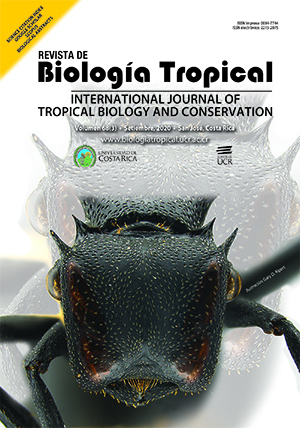Abstract
Introduction: The freshwater fish Brycon henni (Characiformes: Bryconidae) is endemic to Colombia and currently considered as a “least concern” species according to the International Union for Conservation of Nature (IUCN). Objective: To develop microsatellite markers to examine population genetics in B. henni. Methods: Using a low-coverage sequencing genomic library, this study developed the first set of microsatellite loci to study the population genetics of this Neotropical species. These loci were used to evaluate the genetic diversity and structure of B. henni from three sites of the Magdalena-Cauca Basin (Colombia). Results: A set of 21 polymorphic microsatellite loci was highly informative and revealed that B. henni exhibits genetic diversity (5.143-5.619 alleles/locus, observed and expected heterozygosity = 0.461-0.645 and 0.604-0.662, respectively) and is evenly genetically structured between two tributaries of the Cauca River separated by only 30 km (FꞌST = 0.093, Jost’s DEST = 0.311, P < 0.001) a finding that indicates these may be reproductively isolated groups. Conclusions: We reported a set of 21 polymorphic microsatellite loci that allowed the detection of genetic structure at local and regional scales. This population genetic structure, concordant with that found in eight congeners, is relevant when determining the risk categorization of B. henni, as well as management, conservation, and restocking programs for this species.
##plugins.facebook.comentarios##

This work is licensed under a Creative Commons Attribution 4.0 International License.
Copyright (c) 2020 Edna Judith Márquez, Ricardo Marcel Landínez-García


